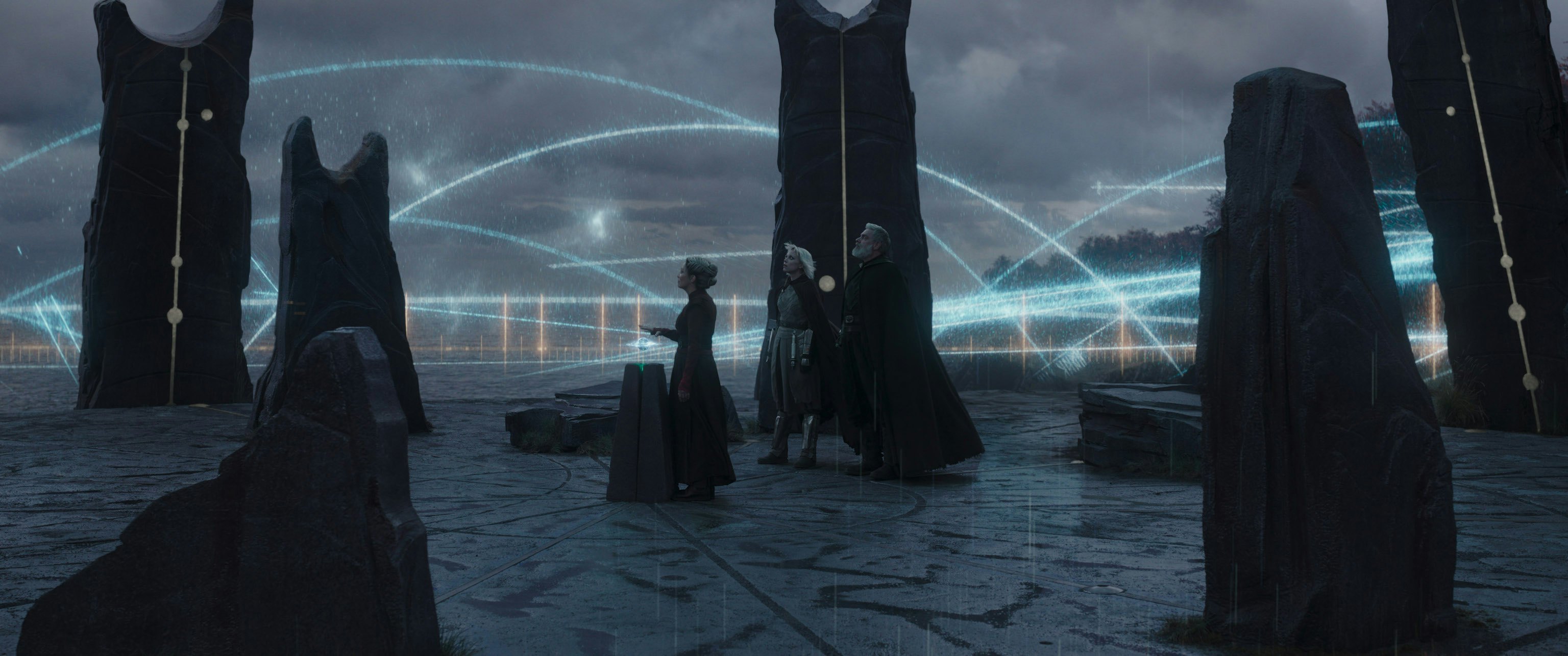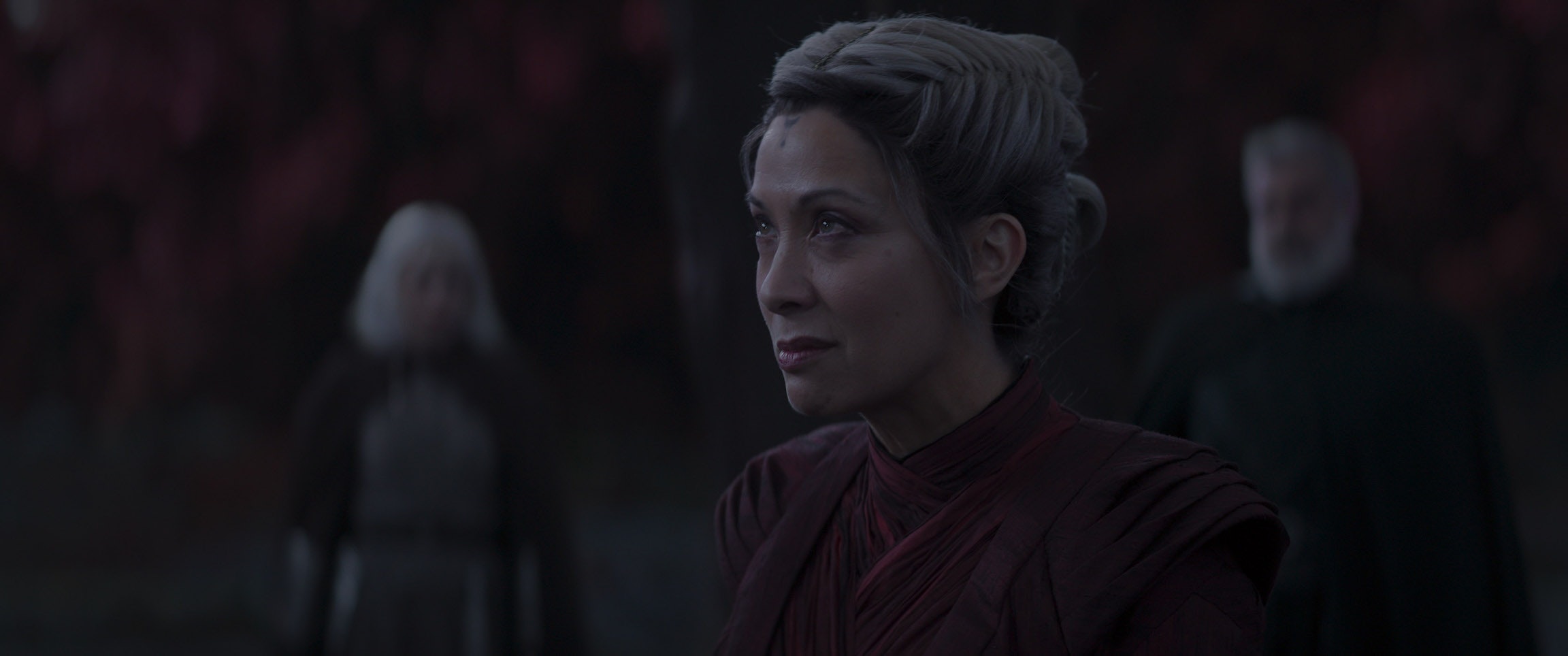
A famous Star Wars character is missing. But, there’s a mysterious map to help us find that person, if only the estranged heroes can come together in unity for a big mission! Is it The Force Awakens? Or is it The Rise of Skywalker? Neither! These story tropes, which pervaded two of the three Star Wars sequel films are also the driving force in the first two episodes of Ahsoka, the latest Star Wars Disney+ TV series to expand the boundaries of what kinds of stories this faraway galaxy can contain. Frustratingly, much of the nitty-gritty of Ahsoka’s literal plot feels all too familiar, and perhaps, a bit too obsessed with Hero's Journey story points. Are all Star Wars-y narratives destined for sameness?
Although Ahsoka’s first two episodes suggest that certain MacGuffin types might be burned into the DNA of Star Wars stories, there are also several new elements that suggest Star Wars might break out of some of its bad habits.
Spoilers ahead for the first two episodes of Ahsoka.
Despite how transgressive various Star Wars projects seem, the broader arcs of many of the stories are often very similar. No matter how much Andor tonally felt different from the rest of Star Wars, Cassian himself went on a Hero’s Journey not too different than Luke Skywalker’s. He lived on a remote planet, got into some trouble, obtained an older mentor, and became a guy who works for the Rebellion. And, although The Mandalorian doesn’t really have an endpoint, Mando himself has a similar arc: He starts as one kind of person, operating from a specific Outer Rim planet, finds some trouble, emerges a hero, and even gains a lightsaber.
The point is, from the perspective of narrative genres, Star Wars doesn’t have the same kind of diversity of storytelling as, say, something like Star Trek or Doctor Who. Watching a random episode of The Mandalorian or The Bad Batch or Rebels, you’ll likely find some kind of plot structure in which characters are on a quest: a thing needs to be brought to a thing, to do a thing, or deactivate a thing, or activate it to create another thing. From R2-D2’s Death Star Plans to Rey’s Sith Wayfinders, Star Wars has MacGuffins and maps all the way down.
The Star Wars map addiction

Ahsoka begins with a Star Wars trope not invented by The Force Awakens, but certainly etched into our recent collective pop culture memory by that film: the vague sci-fi map which leads to a secret place where a needed game-piece character resides. In The Force Awakens, this was the map to Luke Skywalker, and in The Rise of Skywalker, the location of Palpatine’s stronghold on Exegol. This time in Ahsoka, we’ve got a map that will lead us to Grand Admiral Thrawn, and maybe Ezra Bridger, too.
This map is called “the Pathway to Peridea,” and were told it's connected to an ancient legend that even Jedi children know about. Apparently, there’s an “ancient people from a distant galaxy,” and in that distant galaxy is “where Grand Admiral Thrawn is banished.” This all connects to the finale of Rebels in which Ezra and Thrawn were jumped into the “Unknown Regions,” of hyperspace because of the space whales called Purrgils. Rebels set up this concept, and now, with Ahsoka we’ll finally, probably, see where everyone ended up.
A (Newish) Hope for the future

In fairness to Ahsoka, this specific use of the space map trope didn’t just come out of nowhere. In both The Force Awakens and The Rise of Skywalker, the treasure map action felt arbitrary, more Goonies and less Raiders of the Lost Ark. Prior to both of those films, nobody really ever thought things could be hidden in hyperspace, and as many have pointed out, the logistics of the map to Luke Skywalker barely makes sense.
The less said about Sith Wayfinders is probably for the best, but what makes Ahsoka’s “Pathway to Peridea” significantly better than other random Star Wars space maps is the simple fact that the finale of Rebels in 2016 justifies its existence. Second, the idea that this is a distant galaxy is also pretty new for Star Wars. Throughout the franchise, we’ve tended to stay focused on one specific faraway galaxy, a long time ago. Traveling to a new galaxy is always a daring proposition for any well-established sci-fi world, and even when Star Trek and Dune go to other galaxies it's a pretty big deal.
In other words, the fact that this Star Wars map delineates the routes between galaxies, it feels sufficiently complicated and epic. Not only does an existing narrative arc justify this trope, but the notion of Star Wars actually exploring an unseen galaxy is also tantalizing.
If Ahsoka delivers one thing, maybe it will be the promise of breaking down the boundaries of the Star Wars canon. Because, if any of the characters get to inhabit a whole new galaxy, we could suddenly be dealing with a version of the Star Wars canon that feels, quite literally, brand new.







